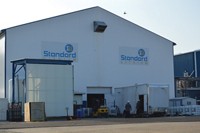Advertisement
Grab your lab coat. Let's get started
Welcome!
Welcome!
Create an account below to get 6 C&EN articles per month, receive newsletters and more - all free.
It seems this is your first time logging in online. Please enter the following information to continue.
As an ACS member you automatically get access to this site. All we need is few more details to create your reading experience.
Not you? Sign in with a different account.
Not you? Sign in with a different account.
ERROR 1
ERROR 1
ERROR 2
ERROR 2
ERROR 2
ERROR 2
ERROR 2
Password and Confirm password must match.
If you have an ACS member number, please enter it here so we can link this account to your membership. (optional)
ERROR 2
ACS values your privacy. By submitting your information, you are gaining access to C&EN and subscribing to our weekly newsletter. We use the information you provide to make your reading experience better, and we will never sell your data to third party members.
Energy Storage
Direct lithium extraction projects advance
SQM wants to build the world’s biggest DLE project in Chile
by Matt Blois
September 29, 2022
| A version of this story appeared in
Volume 100, Issue 35

Encouraged by rising demand for electric cars, SQM and several other firms are advancing plans to get lithium using direct lithium extraction (DLE), an emerging technology that extracts salts of the metal from brine.
Today, much of the lithium used to make batteries comes from concentrating lithium-rich brines over months or years in large evaporation ponds. Lithium can also come from hard-rock mines.
The evaporation process isn’t very efficient, and some environmental groups say it uses too much water. DLE can be twice as efficient as evaporation ponds, according to a report from the consulting firm McKinsey & Company, but it hasn’t been proven at large scale.
SQM is evaluating several DLE technologies—including solvent extraction, adsorption, ion exchange, and membranes— for what it says will be the world’s largest DLE plant, at one of its facilities in Chile. SQM plans to deploy DLE in combination with new equipment that uses energy to actively concentrate brine in an initial step. The company will continue to use the existing passive evaporation process alongside DLE.
At a September investor presentation, SQM CEO Ricardo Ramos said DLE requires more freshwater than evaporation ponds do. The company plans to build a desalination plant on the Chilean coast that will replace the freshwater it consumes at its inland lithium operation. SQM expects to spend $1.5 billion on DLE and related projects and is working with regulators to get approval. “It’s going to be huge,” Ramos said.
High lithium prices are pushing other DLE efforts forward. In Argentina, the ion-exchange DLE firm Lilac Solutions is starting up a demonstration plant at a mine operated by Lake Resources.
In the US, the oil and gas services company Tetra Technologies wants to use adsorption DLE technology to extract lithium from brines in Arkansas. Tetra leases some of its lithium extraction rights to Standard Lithium, which is starting feasibility studies for its own DLE plant in Arkansas. And Compass Minerals recently said it plans an adsorption DLE facility at Utah’s Great Salt Lake.



Join the conversation
Contact the reporter
Submit a Letter to the Editor for publication
Engage with us on Twitter